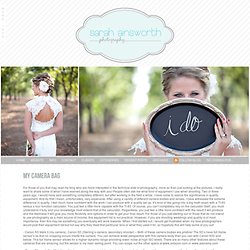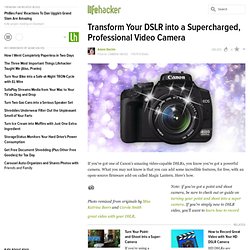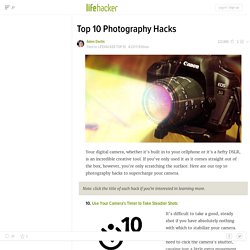

My camera bag » Sarah Ainsworth Photography. For those of you that may read my blog who are more interested in the technical side of photography, more so than just looking at the pictures, I really want to share some of what I have learned along the way with you!

People often ask me what kind of equipment I use when shooting. Two or three years ago, I would have said something completely different, but after working in the field a while, I have come to realize the significance in quality equipment. And by that I mean, unfortunately, very expensive. Divine Composition With Fibonacci’s Ratio (The Rule of Thirds on Steroids) Are you a stickler for little details?

Well, if you’re a photographer, you had better be. Discovering the rule of thirds is a big milestone for any photographer. Suddenly, you realize that all you ever did before was center your subject right smack dab in the middle of the frame, because that’s where the camera’s focus grid is located. Makes sense right? The rule of thirds took you to new heights in your photographic journey, moving your subject off to one side or another in your frame, or to the top or bottom. Enter Fibonacci’s Ratio… Also known as the Golden Mean, Phi, or Divine Proportion, this law was made famous by Leonardo Fibonacci around 1200 A.D.
Since the Renaissance, artists and architects have designed their work to approximate this ratio of 1:1.618. This ratio can be used in many ways to compose a photograph. Video 1: Natures Number: 1.618 Video 2: Nature by Numbers Video 3: Golden Ratio Ok, hopefully that made things a bit more clear? This one is slightly different. Macro Photography Tips for Point and Shoot Digital Cameras. Transform Your DSLR into a Supercharged, Professional Video Camera. @ForestFire0: On the contrary, these cameras are already getting a lot of play in independent and commercial video for the following reasons.

Basics of Photography: The Complete Guide. How to Photograph Christmas Lights. Normally when we talk about balancing light on Strobist, it usually means balancing ambient with flash.

But getting good photos of holiday lights involves a different kind of light balancing: Continuous ambient with fading ambient. You don't need a high-end camera for great results. You can use a very inexpensive digital camera and do just fine. You don't even need flash. It all comes down to what time of the day you shoot. Timing and Balance Photo by Troy McCullough The problem with the vast majority of Christmas lights photos is that most people wait until way too late to start shooting.
Conversely, if you were to shoot the lights in the middle of the day, they would not show up at all. Photo by David Hobby, Baltimore Sun. Top 10 Photography Hacks. "Magic Lantern turns Canon DSLRs with video capabilities into near-professional video cameras.

" No, it does not. It's nice to have the lenses and the ability, but a single sensor Video camera is very far from a pro video camera. DSLR's are great for the slow motion no moving shots, if you need to get artsey with your 55mm prime, they are great! If you need to videotape a car race, news event, sports event, they completely suck. It's a great example of why a single sensor is not used in professional or even prosumer video cameras.
Plus handheld, the optical IS system in my Canon video camera beats the IS in any of my canon DSLR lenses hands down. Create an Instant "Green Screen" with Your Computer's Display for Quick and Dirty Background Removal. Become More Photogenic by Knowing How Genuine Facial Expressions Feel. Can you tell the difference between a real smile and a fake one?

There's a neat test you can take to find out. [www.bbc.co.uk] I got 13 out of 20 right, which is apparently a really good score. Based on overall test results, people seem to be notoriously bad at telling real from fake. I concentrated not on the eyes or the mouth, but on how quickly they test subjects returned from smiling to a neutral expression. There's some interesting insight on the post-test page, I'm pasting it for the benefit of anyone who doesn't want to take the test.
StolenCameraFinder Locates Your Stolen Camera by Using Your Existing Photos. How Can I Take Better Photos in Low Light? All good tips.

Some of those do indeed involve spending a good deal of money but they are spot on. In general (film or digital) you just need to remember that in order to get a good photo, you need to get a certain amount of light on to the sensor or film. There are three basic controls you have over this: 1) Open the aperture wider. The larger the aperture, the more light gets in. 2) Leave the shutter open for longer. 3) Use more sensitive film or set the ISO higher.
How Do I Figure Out How Many MegaPixels Are Necessary for Printing a Photo at a Specific Size? Learn to Properly Clean a DSLR Camera Lens. How to Take Great Portrait Photos. @Samurai I-am-awry Is not on the list hallelujah!

: I don't know where this comes from, but the Nikon DX lenses don't account for any crop factor other than producing a smaller image circle that makes them useless on a full-frame body. A 35mm DX lens looks the same on a DX body as a 35mm non-DX lens would on it. @cmdtacos: Hmmm interesting. Not actually owning any DX lenses myself, I just assumed that the smaller image circle was part of producing a more "zoomed out" image. Now I'm left wondering why these DX lenses exist. @Samurai I-am-awry: There are two main reasons they exist.
Part of me also thinks in some cases it's to get people to buy new lenses when they switch to a full-frame camera. With an FX lens or an older film lens, on a DX camera, some light is lost because it's not hitting the sensor, it's hitting the stuff around the sensor. Try this, if you have a 50mm lens, mount it and hold your DSLR up sideways to one eye and open the other eye.